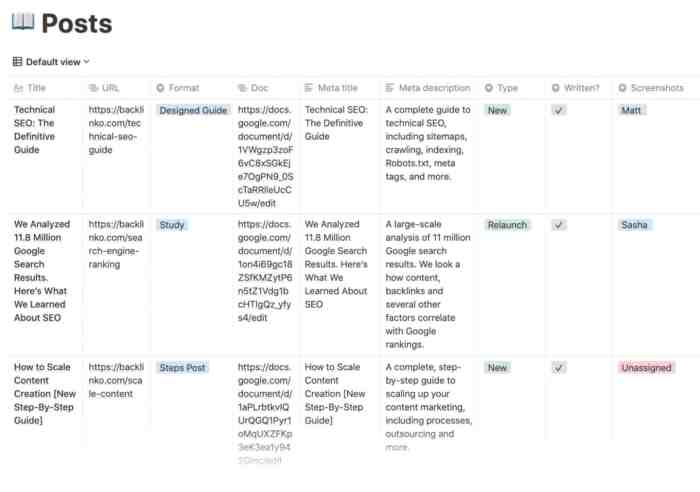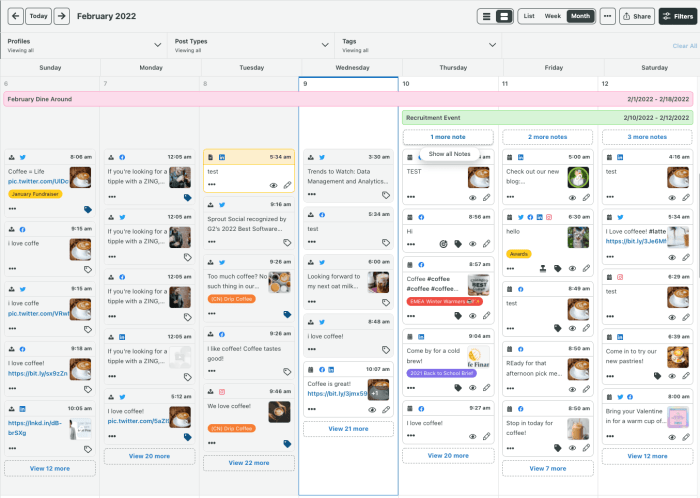Creating Seasonal Content Marketing Plans sets the stage for dynamic business success, blending creativity with strategy to captivate audiences and drive results. Dive into the world of seasonal content and unlock the potential for your brand to shine bright.
Importance of Seasonal Content Marketing Plans: Creating Seasonal Content Marketing Plans
Seasonal content marketing plans are crucial for businesses as they allow companies to align their marketing efforts with the changing needs and preferences of their target audience. By creating content that is relevant to the season, businesses can capture the attention of consumers who are actively seeking information, products, or services related to that time of year.
Boosting Engagement and Conversions
Seasonal content can boost engagement and conversions by tapping into the emotions and sentiments associated with a particular season. For example, a holiday-themed marketing campaign can create a sense of excitement and anticipation among consumers, leading to increased interest in the products or services being promoted. By leveraging seasonal trends and themes, businesses can effectively connect with their audience on a more personal level, ultimately driving higher engagement and conversion rates.
Successful Seasonal Marketing Campaigns
One example of a successful seasonal marketing campaign is Coca-Cola’s iconic Christmas advertising, featuring Santa Claus and polar bears. This campaign has become a holiday tradition for many consumers, evoking a sense of nostalgia and joy that is closely tied to the brand. Another example is Starbucks’ Pumpkin Spice Latte promotion, which generates buzz and excitement every fall, driving sales and foot traffic to their stores. These campaigns demonstrate the power of leveraging seasonal content to create memorable experiences and drive consumer action.
Elements of a Strong Seasonal Content Marketing Plan

Creating a strong seasonal content marketing plan involves key components that are crucial for success. It is important to align seasonal content with business goals to maximize the impact and reach of the marketing efforts. Integrating seasonal themes into content effectively can help businesses connect with their target audience and drive engagement.
Key Components of a Seasonal Content Marketing Plan
- Researching Seasonal Trends: Understanding the trends and preferences of the target audience during different seasons is essential for creating relevant and engaging content.
- Creative Content Ideas: Developing unique and creative content ideas that resonate with the seasonal theme can help capture the audience’s attention.
- Content Calendar: Planning and scheduling content in advance based on seasonal events, holidays, and trends can ensure timely delivery and maximize impact.
- Promotion Strategy: Implementing a promotion strategy that leverages seasonal elements to increase visibility and engagement with the target audience.
- Measuring Performance: Tracking and analyzing the performance of seasonal content to understand what works best and optimize future campaigns.
Aligning Seasonal Content with Business Goals
- Enhanced Brand Awareness: Seasonal content can help increase brand visibility and awareness among the target audience.
- Driving Conversions: Aligning seasonal content with business goals can lead to higher conversion rates and increased sales during peak seasons.
- Building Customer Relationships: Creating relevant and engaging seasonal content can strengthen relationships with customers and foster loyalty.
- Boosting Engagement: Seasonal content that resonates with the target audience can drive higher engagement levels and interaction with the brand.
Integrating Seasonal Themes into Content Effectively
- Personalization: Tailoring seasonal content to specific audience segments can increase relevance and engagement.
- Consistent Branding: Maintaining consistent branding elements while incorporating seasonal themes can help reinforce brand identity.
- Storytelling: Using seasonal themes to tell compelling stories can captivate the audience and create a memorable brand experience.
- Interactive Content: Incorporating interactive elements into seasonal content can enhance engagement and encourage audience participation.
Research and Analysis for Seasonal Content

Research and analysis play a crucial role in developing a successful seasonal content marketing plan. By understanding market trends, consumer behavior, and competitor strategies, businesses can create targeted and effective campaigns that resonate with their target audience.
Significance of Conducting Research
Research is essential for identifying key seasonal trends, consumer preferences, and market opportunities. By conducting thorough research, businesses can gain valuable insights that inform their content strategies and help them stay ahead of the competition.
- Utilize tools like Google Trends, social media analytics, and industry reports to track seasonal search patterns and popular topics.
- Survey your target audience to gather feedback on their seasonal preferences, shopping habits, and content consumption behavior.
- Analyze past performance data to identify successful seasonal campaigns and understand what resonated with your audience.
Methods for Analyzing Market Trends and Consumer Behavior, Creating Seasonal Content Marketing Plans
Analyzing market trends and consumer behavior is crucial for creating relevant and engaging seasonal content. By understanding your target audience’s needs and preferences, businesses can tailor their content to meet their expectations and drive engagement.
- Monitor social media conversations, online reviews, and customer feedback to gauge consumer sentiment and identify emerging trends.
- Conduct research to identify popular seasonal search terms and topics that are relevant to your industry.
- Utilize data analytics tools to track website traffic, engagement metrics, and conversion rates to measure the impact of your seasonal content.
Competitor Analysis for Shaping a Successful Strategy
Analyzing your competitors’ seasonal content strategies can provide valuable insights and help you differentiate your brand in a crowded market. By understanding what works for your competitors and where they fall short, you can identify opportunities to create unique and compelling seasonal content that resonates with your target audience.
Keep an eye on your competitors’ social media activity, email campaigns, and website content to identify seasonal trends and promotional strategies.
- Identify gaps in your competitors’ content offerings and develop unique value propositions that set your brand apart.
- Study your competitors’ audience demographics, engagement levels, and content performance metrics to refine your own seasonal content strategy.
- Monitor competitor pricing, promotions, and product launches to anticipate market trends and position your brand effectively during peak seasons.
Content Creation and Promotion Strategies
Creating engaging seasonal content requires a mix of creativity, relevance, and strategic planning. To capture the attention of your target audience, you need to understand what resonates with them during different seasons and tailor your content accordingly. Here’s a breakdown of the process:
Engaging Seasonal Content Creation
- Identify seasonal trends and themes relevant to your industry or target audience.
- Brainstorm creative ideas for content that align with these seasonal elements.
- Create a content calendar outlining the type of content you will produce and when it will be released.
- Produce high-quality, visually appealing content such as blog posts, videos, infographics, or social media posts.
- Incorporate seasonal s and hashtags to optimize your content for search engines and social media platforms.
Content Formats for Seasonal Campaigns
- Blog Posts: Share seasonal tips, trends, and news related to your industry.
- Videos: Create engaging video content showcasing seasonal products or services.
- Infographics: Present seasonal data or information in a visually appealing format.
- Social Media Posts: Share behind-the-scenes glimpses, user-generated content, or seasonal promotions on social platforms.
Promoting Seasonal Content Across Channels
- Utilize email marketing to reach out to your subscribers with seasonal content updates and promotions.
- Share content on social media platforms and engage with your audience through comments, likes, and shares.
- Collaborate with influencers or brand ambassadors to extend the reach of your seasonal campaigns.
- Consider running paid advertising campaigns on platforms like Google Ads or social media to boost visibility.





